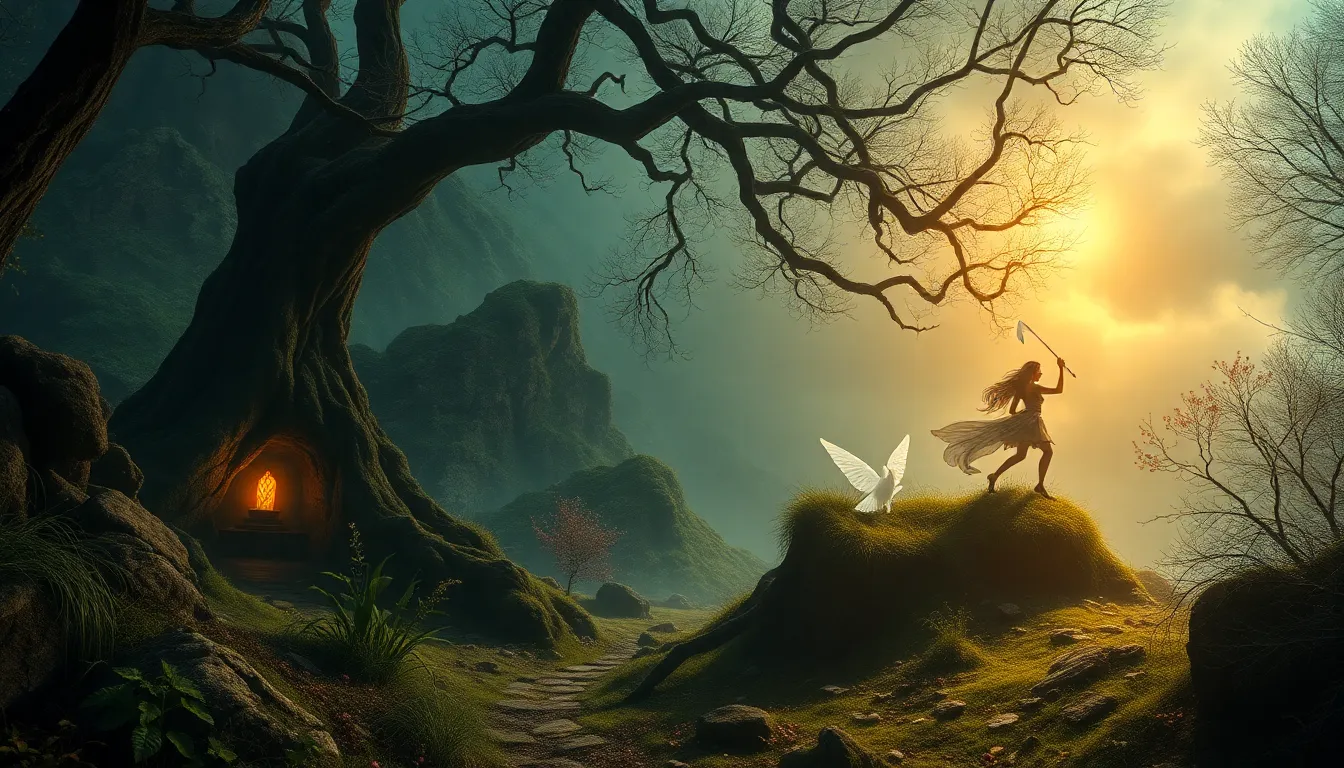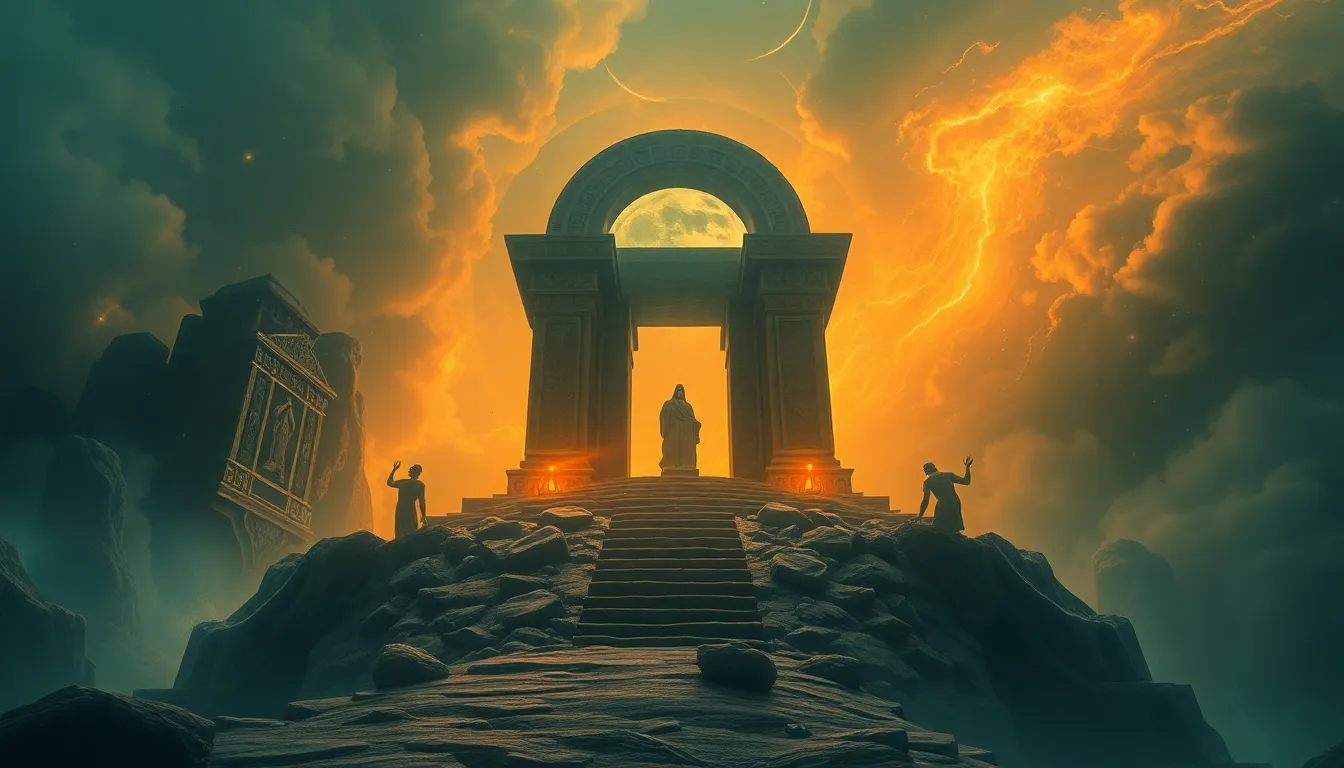Baba Yaga in Modern Literature: Reinventing the Hag for a New Age
I. Introduction
Baba Yaga, a figure steeped in Slavic folklore, has long been a source of fascination and fear. Traditionally depicted as a witch with a penchant for cannibalism, her character embodies the complexities of the natural world and women’s roles within it. She is often portrayed as an old hag who lives in a hut that stands on chicken legs, hidden deep within the forest. Over time, Baba Yaga has evolved from a mere antagonist in fairy tales to a multifaceted symbol with significant cultural resonance.
This article aims to explore Baba Yaga’s evolution in contemporary literature, examining how modern authors are reinventing her character and what this means for female representation in storytelling.
II. The Traditional Portrayal of Baba Yaga
In traditional Slavic tales, Baba Yaga is characterized by several distinct features:
- The Witch: A fearsome figure with magical abilities, often associated with the dark and mysterious aspects of nature.
- The Hut: Her dwelling is a magical hut that can move around on chicken legs, symbolizing her elusive nature.
- The Forest: Baba Yaga is often a guardian of the forest, a place where the wild and untamed aspects of life reside.
Baba Yaga serves various roles in folklore: she is an antagonist who challenges heroes, a mentor who provides wisdom, and a guardian of ancient knowledge. Classic tales like “Vasilisa the Beautiful” showcase her as both a fearsome adversary and a source of vital assistance, illustrating her dual nature.
III. The Shift in Perception: From Villain to Complex Character
In recent years, literary interpretations of Baba Yaga have shifted significantly, particularly within feminist discourse. Scholars and writers have begun to explore her character not just as a wicked witch but as a symbol of empowerment and resilience.
The hag archetype, often associated with aging women and perceived as a negative stereotype, has been redefined in modern narratives:
- Feminist Interpretations: Some authors view Baba Yaga as a figure of female power, challenging patriarchal norms and societal expectations.
- Complexity: Modern narratives often paint her as a multifaceted character with her own motivations, fears, and desires.
Examples of literature that reframe Baba Yaga’s role include:
- “Baba Yaga Laid an Egg” by Dubravka Ugrešić: A contemporary exploration of aging and identity.
- “The Bear and the Nightingale” by Katherine Arden: A tale that presents Baba Yaga as a wise and powerful figure connected to the natural world.
IV. Contemporary Authors Reimagining Baba Yaga
Numerous contemporary authors have incorporated Baba Yaga into their works, each offering unique interpretations that challenge traditional portrayals:
- “Baba Yaga’s Assistant” by Marika McCoola: A graphic novel that presents a young girl’s journey toward self-discovery with Baba Yaga as a central figure.
- “Wicked” by Gregory Maguire: Though not directly featuring Baba Yaga, the novel’s examination of witchcraft and morality echoes themes found in tales of the witch.
These reinterpretations not only deepen the understanding of Baba Yaga but also impact the perception of female characters in literature, allowing for a broader spectrum of female experiences and identities.
V. Themes and Motifs in Modern Representations
Modern representations of Baba Yaga explore several recurring themes and motifs:
- Empowerment: Many stories depict Baba Yaga as a figure who empowers other characters, particularly women, to embrace their own strength.
- Resilience: The challenges faced by Baba Yaga often mirror the struggles of women in contemporary society.
- Wisdom: Baba Yaga’s knowledge of magic and the natural world positions her as a keeper of wisdom, providing guidance to those who seek it.
Furthermore, the integration of magic and folklore into contemporary storytelling allows for a rich exploration of cultural heritage, often adapting traditional motifs to modern settings and issues.
VI. Baba Yaga in Popular Culture Beyond Literature
Baba Yaga’s influence extends beyond literature into various forms of popular culture, including film, television, and video games:
- Films: In movies like “John Wick,” Baba Yaga is reimagined as a fearsome assassin, showcasing her adaptability to modern narratives.
- Television: Series such as “Once Upon a Time” present Baba Yaga in a more nuanced light, blending folklore with contemporary storytelling.
- Video Games: Games like “The Witcher” feature Baba Yaga-inspired characters, incorporating her essence into interactive narratives.
These portrayals further reshape her character, often emphasizing her complexity and the dualities inherent in her nature, while connecting literary and popular representations.
VII. The Cultural Significance of Reinventing Baba Yaga
The reinvention of Baba Yaga in modern literature and popular culture carries significant cultural implications:
- Cultural Identity: Folklore plays a crucial role in shaping cultural identity, and Baba Yaga serves as a bridge between the past and present.
- Diverse Representations: The variety of interpretations of Baba Yaga highlights the importance of diverse representations of women in literature, challenging stereotypes and expanding narratives.
- Societal Changes: Baba Yaga’s evolution reflects broader societal changes, particularly regarding women’s roles and empowerment in contemporary culture.
VIII. Conclusion
In summary, Baba Yaga’s evolution in modern literature illustrates a significant shift in how this iconic figure is perceived and represented. From a traditional villain to a complex character embodying empowerment and resilience, her reinvention speaks to the changing landscape of female representation in storytelling.
As contemporary authors continue to explore her character, the future direction of Baba Yaga in literature promises to be rich with possibility. Her enduring legacy in contemporary culture serves as a reminder of the power of folklore to adapt and resonate through the ages.




